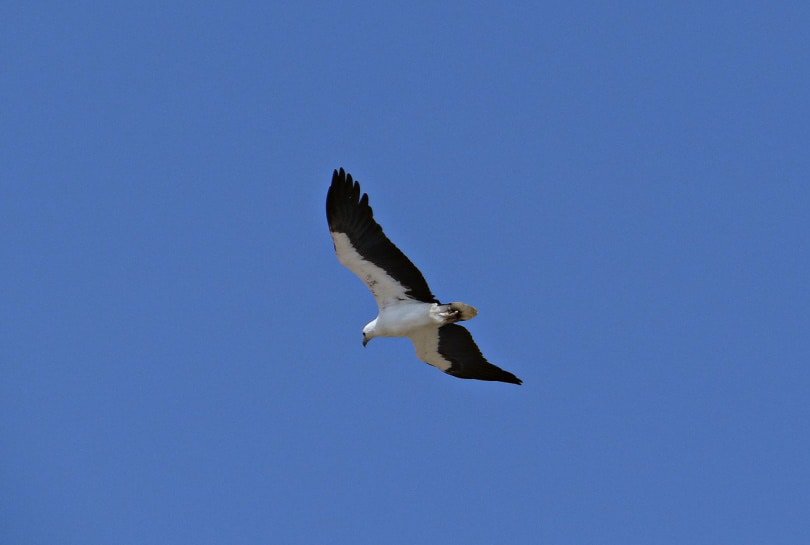Note: This article’s statistics come from third-party sources and do not represent the opinions of this website.
Australia is home to various unique and interesting animals, including several that are not found anywhere else in the world. Some of them can be dangerous to both people and other animals. In this article, we look at the most dangerous birds in Australia and discover some facts about them.
Click to Skip Ahead

Top 7 Statistics About Dangerous Birds in Australia
- The world’s most dangerous bird, the Cassowary, was raised by humans 18,000 years ago.
- There are between 625,000–725,000 wild emus in Australia.
- The Black-Necked Stork can weigh between 8.5–9 pounds and stand 4–4.5 feet high.
- Brolgas live in flocks of up to 100 birds.
- In 2021, 12.9% of magpie attacks caused injuries to people.
- The White-Bellied Sea Eagle is the second largest raptor in Australia with a wingspan between 5’8”–7’2”.
- The Laughing Kookaburra is the largest member of the Kingfisher family and has a beak that can reach 4 inches in length.
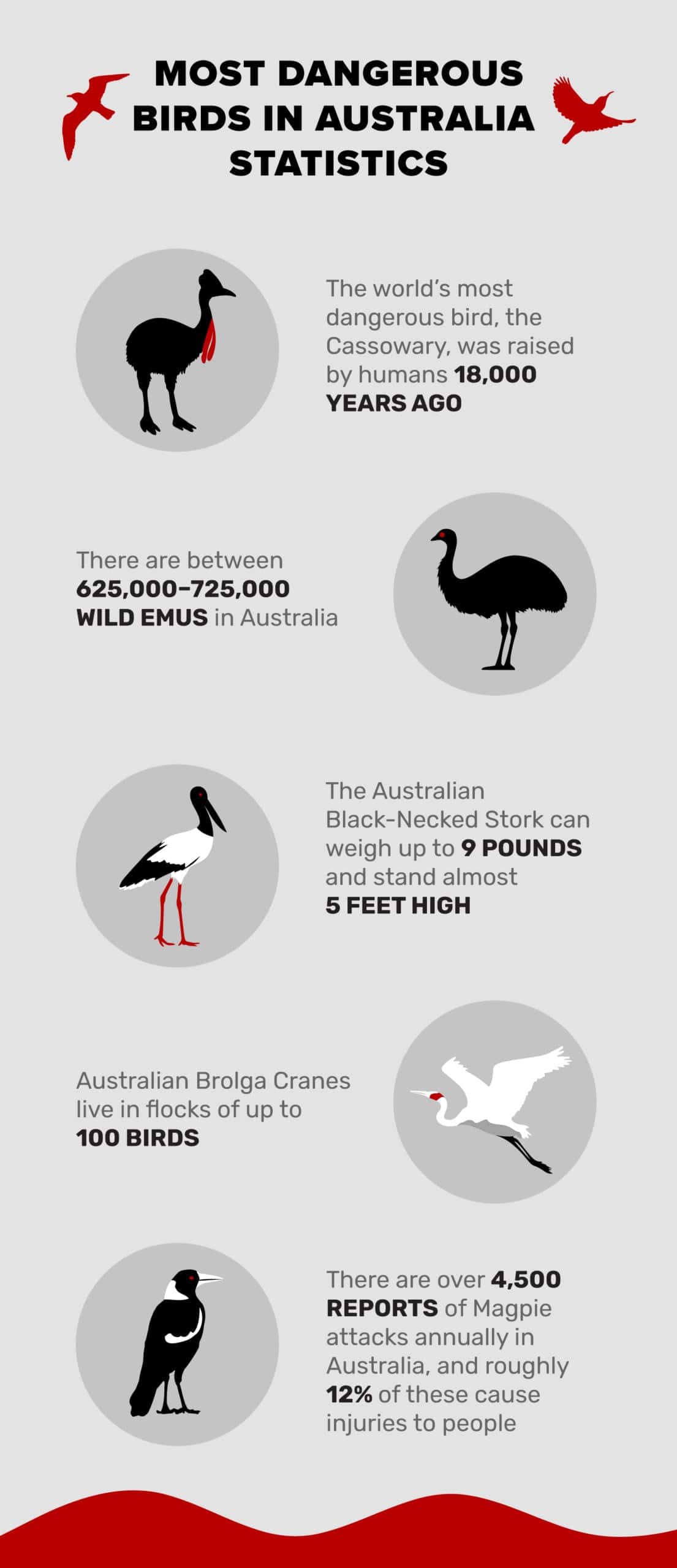
Two of the Most Dangerous Ratites
1. The world’s most dangerous bird, the Cassowary, was raised by humans 18,000 years ago.
(CNN)
The flightless Cassowary can weigh up to 160 pounds. They have strong legs that allow them to run and swim at great speeds. They can run as fast as 31 miles per hour. Their toes have 4-inch-long dagger-like claws on them which have been able to disembowel humans. They are known as the most dangerous birds in the world. Even so, these birds were raised by people thousands of years before chickens were domesticated, making Cassowaries potentially the earliest known example of humans breeding birds.
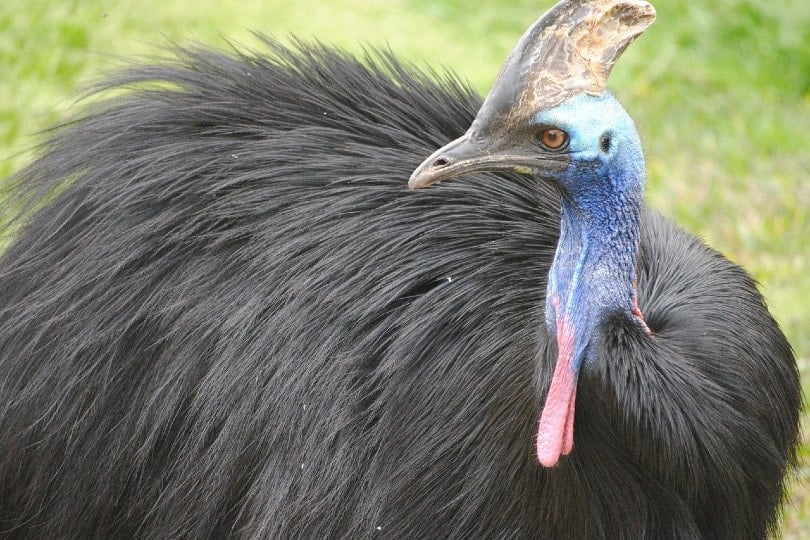
2. There are between 625,000–725,000 wild Emus in Australia.
(Bush Heritage Australia)
Emus are the second-largest birds on the planet and have some of the strongest legs of all birds. They can be dangerous to humans with their powerful leg kicks and sharp claws. Emus will attack people if they feel threatened, are protecting their eggs or offspring, or are provoked. Human fatalities are rare in Emu attacks, but the birds can cause serious injuries. Emus are docile birds if they’re left alone and tend to only attack as a last resort.

Two of the Most Dangerous Waterbirds
3. The Black-Necked Stork can weigh between 8.5–9 pounds and stand 4–4.5 feet high.
(Australia Zoo)
The Black-necked Stork is the only stork found in Australia and is also called a Jabiru. These large, wading birds mate for life. In pairs, they are often aggressive towards other animals and humans if they are defending their nests. They are not very social birds and prefer to keep to themselves but won’t hesitate to fight for their territory or food sources.
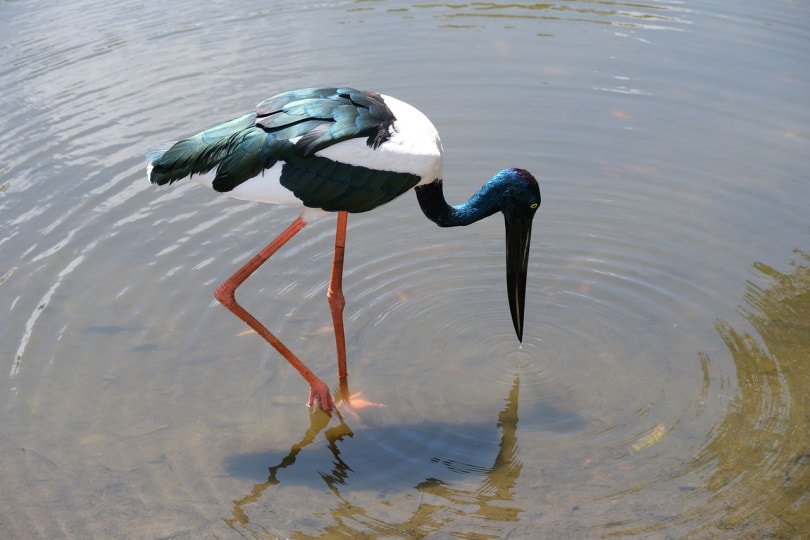
4. Brolgas live in flocks of up to 100 birds.
(Australian Museum)
Brolgas are large, grey cranes that inhabit wetlands and coastal mudflats. They are aggressive and quick to fight, especially if they are protecting their nests. They use their sharp claws to rake their victims or stab at them with their bills. Male Brolgas can weigh up to 15 pounds. Females weigh up to 12.5 pounds. Their size enables them to pack a lot of power in their attacks.

Three Other Dangerous Birds
5. In 2021, 12.9% of Magpie attacks caused injuries to people.
(Magpie Alert)
Each year in Australia, there are approximately 4,500 reports of Magpie attacks. These attacks usually occur when male Magpies are defending their nests. The attacks are called “swooping,” where the birds will dive down to peck at humans. Swooping can cause great injuries to both faces and eyes.

6. The White-Bellied Sea Eagle is the second largest raptor in Australia with a wingspan between 5’8”–7’2”.
(Sea-Eagle Cam)
The White-Bellied Sea Eagle has a sharp beak and claws, making them very harmful if they attack you. These birds are violent and aggressive hunters, swooping down to grab fish right out of the water with their claws. If they feel that their territory is being invaded, they have been known to attack humans. Mainly it’s other animals that are in danger.
White-Bellied Sea Eagles are carnivores, eating sea snakes, fish, turtles, and other aquatic life. They are also able to attack, kill, and consume small dogs and cats. It’s best to keep an eye on your small animals and observe White-Bellied Sea Eagles from a distance. Getting too close to them could bring out their aggression.
7. The Laughing Kookaburra is the largest member of the Kingfisher family and has a beak that can reach 4 inches in length.
(National Geographic)
The Laughing Kookaburra is born with a sharp, hooked upper beak that they use to attack their nestmates. The hook fades by the time the bird leaves the nest but their aggression does not. These are territorial birds that will swoop to defend their nests and territories. They will also fight each other. Male Kookaburras will attack one another during the breeding season. They will attack their own reflections in windows, even causing injuries to themselves, thinking another bird is in their territory.


Frequently Asked Questions About Dangerous Birds in Australia
Why are Magpies dangerous to other animals?
Magpies don’t discriminate when it comes to their diets. They will eat whatever they can find. These omnivorous birds survive on fruit, nuts, seeds, and insects. However, they have no problem stealing eggs or hatchlings out of nests and eating them, as well. They will also eat small rodents, lizards, and other animals that they can overpower. While they will swoop and attack humans to protect their own nests, they have no problem causing damage and destruction to the nests of other birds. No small creature is safe from a hungry Magpie.
Is a Cassowary a dinosaur?
The scaly feet and powerful claws of the Cassowary look prehistoric with good reason. Cassowaries and all other birds are descendants of the only dinosaur lineage that survived the mass extinction 66 million years ago. The Cassowary’s strong legs and feet can do severe and sometimes fatal damage to any animal or human that threatens them. (Live Science)
How do you survive a Cassowary attack?
First, prevent the attack if you can. Never feed Cassowaries, as this can make them aggressive when they see people. It is illegal to feed Cassowaries in Queensland for this reason.
Do not confront a Cassowary or get near their eggs or chicks. These are territorial birds that will attack to protect their nests.
If a Cassowary confronts you, stay calm and slowly back away. Cassowaries can run faster than most people. Turning your back on them and running will guarantee they will chase you and be able to catch you. If you must flee, go towards a road or area that leads out of the bird’s natural habitat. They may not be interested in following you.
If you have food with you, throw it to the Cassowary. Chances are they will find that more interesting than you and give you a chance to escape. Don’t crouch or lie down on the ground as this makes you more vulnerable to Cassowary kicks.
Being aware of your surroundings and leaving Cassowaries alone, should you encounter them, will be the best ways to keep you safe from their attacks.
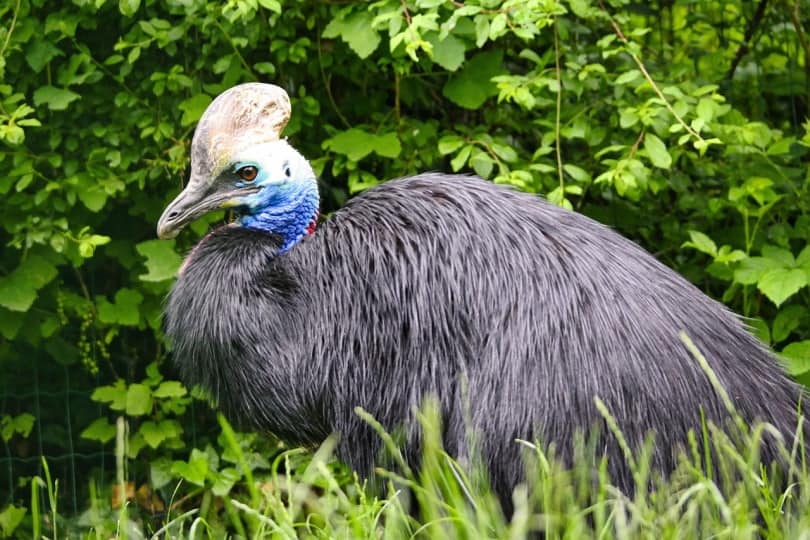
How do you survive swooping Magpies?
Magpies are a protected species in Australia and it is illegal to injure, harm, or kill them even if they are swooping you. The best thing to do is be aware of their breeding season, which is from July through December. The most frequent swooping month is September.
If a Magpie swoops you, protect your face and head. If you have a hat or umbrella, use these as barriers. Wear sunglasses to protect your eyes. Magpies tend to swoop cyclists more than pedestrians, so get off your bike and walk through Magpie territory.
Wildly waving your arms around will indicate aggressive behavior to the birds and they may come back stronger. Stay cool and quietly move away from the bird. If the Magpie recognizes that you aren’t a threat, they will be unlikely to swoop you if you return to their area. Magpies can remember faces.

Final Thoughts
Many of us don’t think of danger when we think of birds. However, these seven in Australia make it very clear that birds can be dangerous to both humans and animals. Knowing what to be aware of is important to keep yourself safe in areas where these birds live and breed.
We hope this article has made you more familiar with what to expect from these birds and what to do if you should ever meet one of them.
